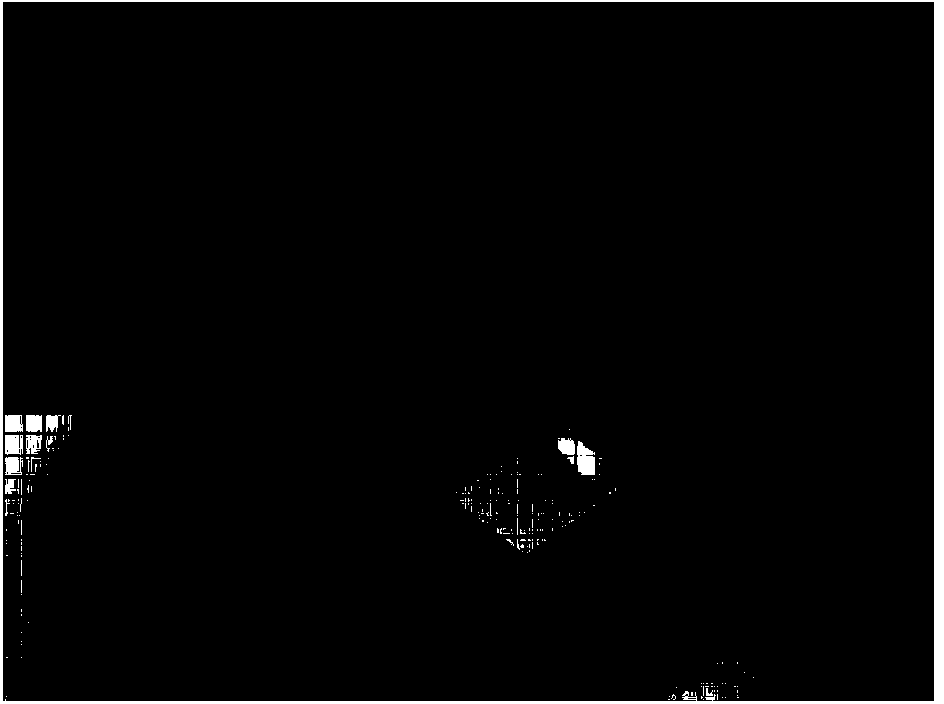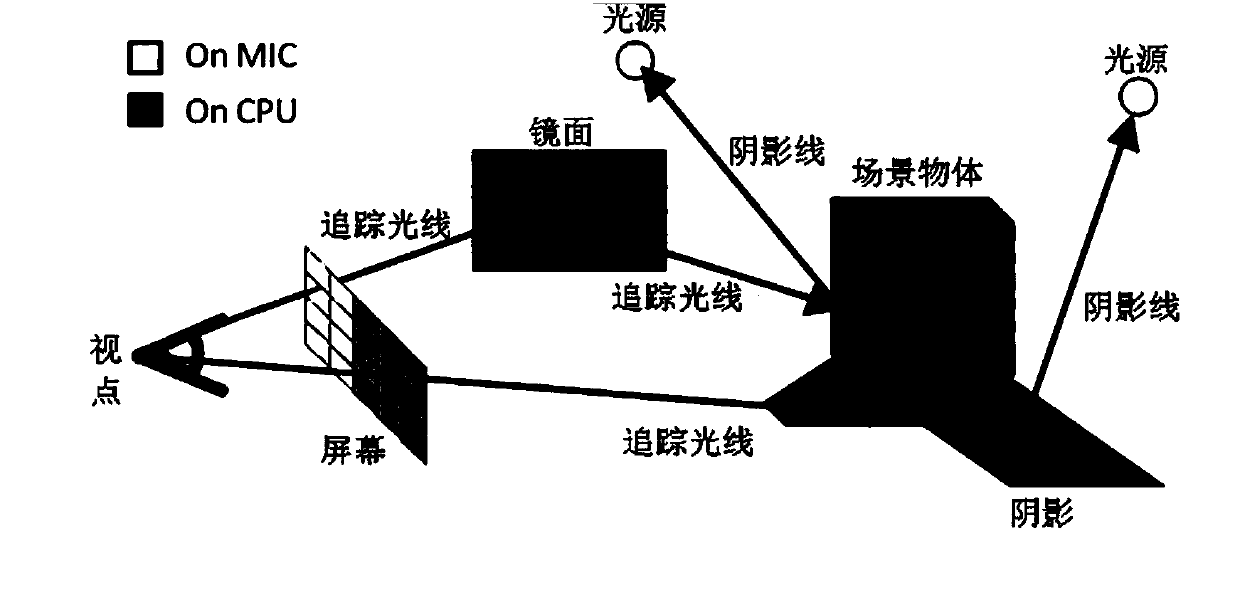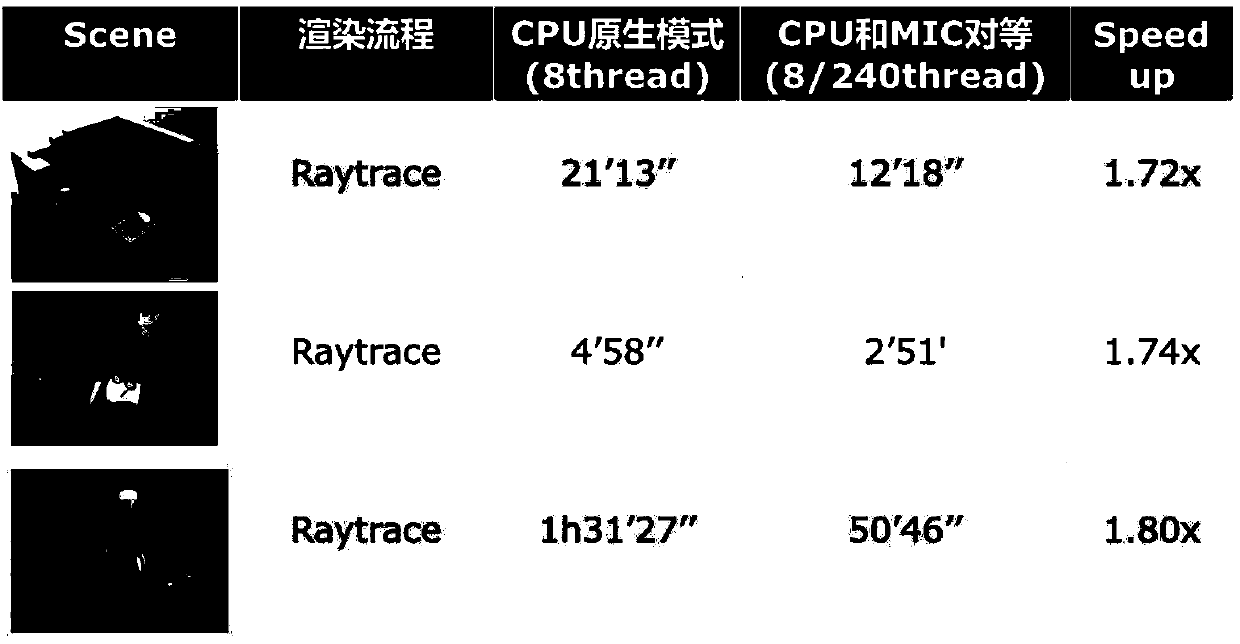Light ray tracing acceleration method based on Intel multiple core framework peer mode
A technology of ray tracing and patterns, applied in 3D image processing, instruments, calculations, etc., can solve problems such as slow calculation speed, and achieve the effect of large parallel granularity, high robustness, and obvious acceleration effect
- Summary
- Abstract
- Description
- Claims
- Application Information
AI Technical Summary
Problems solved by technology
Method used
Image
Examples
Embodiment Construction
[0041] Below in conjunction with accompanying drawing and embodiment the present invention will be further described:
[0042] Since in the ray tracing method, the number of rays is huge, and the calculation of a ray emitted from a screen pixel is independent of another ray, it is possible to perform parallelism between rays. According to the relative calculation capabilities of the CPU and the MIC coprocessor, the present invention adopts an adaptive rendering task division method, and distributes the first-level rays emitted from different regions of the screen to the CPU and the MIC coprocessor for parallel processing. The CPU and MIC coprocessor adopt a peer-to-peer mode, and execute the same rendering process for ray tracing and rendering after obtaining rays. After the CPU and the MIC coprocessor get the rendering task, they both divide the screen area into multiple bucket blocks, each of which only needs to be responsible for the specified screen block rendering, and ea...
PUM
 Login to View More
Login to View More Abstract
Description
Claims
Application Information
 Login to View More
Login to View More - R&D Engineer
- R&D Manager
- IP Professional
- Industry Leading Data Capabilities
- Powerful AI technology
- Patent DNA Extraction
Browse by: Latest US Patents, China's latest patents, Technical Efficacy Thesaurus, Application Domain, Technology Topic, Popular Technical Reports.
© 2024 PatSnap. All rights reserved.Legal|Privacy policy|Modern Slavery Act Transparency Statement|Sitemap|About US| Contact US: help@patsnap.com










